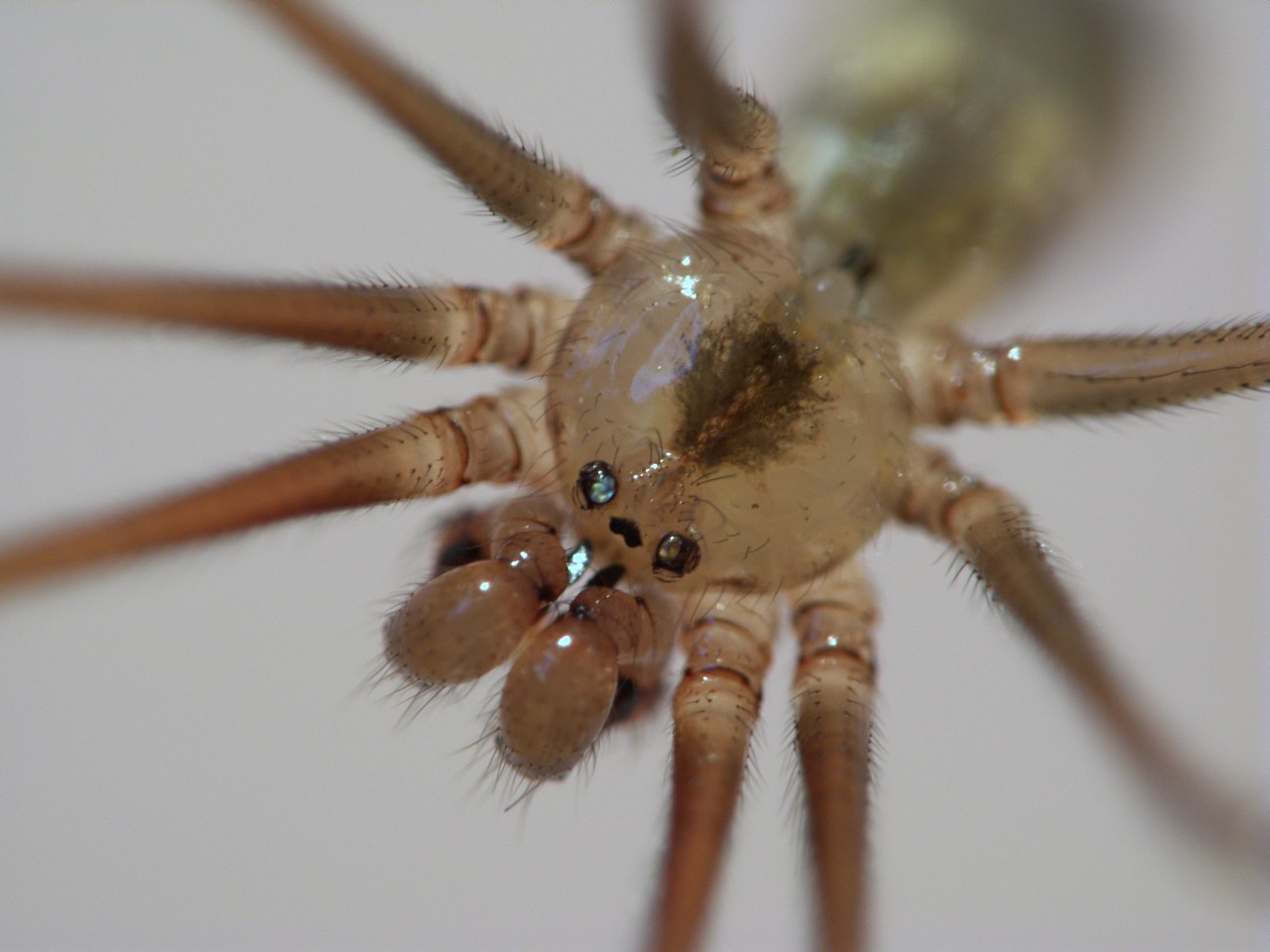Poke around a dusty basement full of boxes that haven’t been touched since last Christmas, and there’s a good chance you’ll come across a cellar spider. Known for their gangly legs and wispy webs, these arachnids are commonly found in homes around the world and scarcely ever cause much trouble (unless you are a small insect).
What is a cellar spider?
Cellar spider isn’t a strictly scientific term, and it can be loosely used interchangeably to refer to the hundreds of arachnids in the Pholcidae family. However, it typically refers to the species Pholcus phalangioides, also known as the cosmopolitan cellar spider or the long-bodied cellar spider.
The species has a cylindrical body, measuring around 8 millimeters in length with spindly legs that are around five to six times the body length.
They’re sometimes referred to as a daddy long-legs spider, although that nickname can refer to a variety of different lanky-legged creatures depending on your local slang.

A close-up headshot of a spider from the Pholcidae family.
As their name suggests, cellar spiders are long-limbed arachnids often found in basements. They’re typically found indoors, primarily in cellars, attics, warehouses, garages, caves, and other dark, quiet spots that have plenty of hiding space.
It’s thought they originated in subtropical parts of the world, although they’ve since managed to spread to most continents on Earth, except Antarctica. It seems that if there’s a quiet room to dwell, they will be there.
With their stilt-like legs, cellar spiders may appear awkward at first glance, but they are a surprisingly versatile predator when it comes to small insects and other spiders.
Their webs are fairly loose, tangled, and fine. Unlike the work of orb-weaving spiders, their webs can look pretty messy and chaotic. However, it serves the same purpose of capturing prey and providing a safe cradle for eggs and spiderlings.
When an unsuspecting insect or even another smaller spider wanders into the web, the cellar spider quickly vibrates the threads, causing its prey to become entangled in the stick fibres. Once ensnared, the spider delivers a venomous bite to subdue it, then wraps it in silk for later consumption.
What happens if a cellar spider bites you?
Cellar spider bites are almost totally harmless to humans. They’re armed with venom that is extremely mild and only strong enough to subdue tiny insects and other spiders, not a large mammal. Their fangs are also said to be too small and weak to penetrate human skin effectively.
And for the record, it’s a thoroughly debunked urban legend that they possess some of the strongest venom in the animal kingdom, yet are unable to administer it in a cruel twist of fate.
So, if you do find a cellar spider knocking around a quiet corner of your home, don’t fret and certainly don’t be scared. You’ve basically earned yourself an eight-legged ally that will happily patrol the area for flies, mosquitoes, and other small pests.
Source Link: Cellar Spider: Are These Long-Legged Basement Dwellers Anything To Fear?